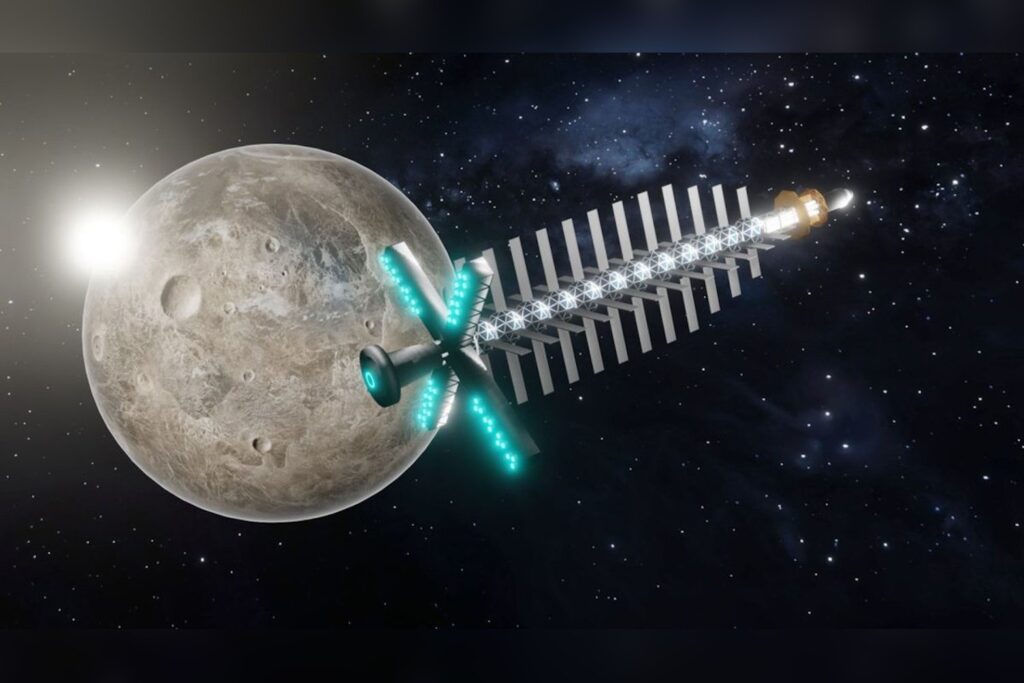A consortium of companies just completed its initial foray into an 11-year project that could put the first nuclear-powered space tug into space. The project is called RocketRoll, and it paves the way for a futuristic mission concept that could drastically change the way humankind powers its spaceborne technologies.
RocketRoll establishes a roadmap for advanced propulsion systems for long-duration space missions—in other words, a literal nuclear option for space agencies. It is a crucial step in building a technology demonstrator, which is exactly what it sounds like: a trailblazing mission that shows, for the first time, the efficacy and possibilities of a new technology. The conclusion of the roughly yearlong RocketRoll project means that the consortium can begin work on the design and launch of the demonstrator itself, which could make nuclear-powered spacecraft the de facto option for future spacecraft.
There are many different types of rocket fuels which offer different advantages and drawbacks. One undeniable drawback is that fuel takes up precious space on a spacecraft; another clear disadvantage is that once that fuel is used up, your spacecraft is SOL—at the mercy of gravitational fields and the laws of physics in vacuum.
“Nuclear propulsion can be multiple times more efficient than the most efficient chemical propulsion, or exceed the electric power limited by solar energy, thus enabling exploration where no other technology can go,” according to ESA’s Commercialization Gateway.
To combat this problem, space agencies and contractors are working on systems that can generate power in space, from Sun-powered space sails to space-borne nuclear reactors. The RocketRoll project—short for the clumsier “pReliminary eurOpean reCKon on nuclEar elecTric pROpuLsion”—is the latter: It aims to propose a nuclear electric propulsion system as a technology demonstrator by 2035. As a demonstrator, the spacecraft would prove out the project design and reveal what technologies, testing, or other aspects of the nuclear system are missing before a larger-scale mission is launched.
RocketRoll “will explore the advantages of using a Nuclear Electric Propulsion (NEP) tug over classical propulsion systems for the demanding missions expected for the future of space logistics and exploration,” according to ESA, adding that the technology “could be used on the Moon or Mars surface to power future habitats or robotic exploration of the solar system, or in space for other purpose than propulsion.”
According to a Tractebel release, the company strategy “is to engineer a range of nuclear power solutions, from radioisotope to fission systems.” In other words, exactly how the nuclear power will be generated aboard the tech demonstrator remains to be seen. The team has about 10 years to figure that out, but nuclear fission is an especially popular system in nuclear propulsion systems currently in development.
Nuclear fission is the reaction that occurs in nuclear reactors today. It is often confused with nuclear fusion, the reaction that occurs at the heart of stars like our Sun. The key scientific difference is that nuclear fusion generates energy by combining two or more atoms, while fission generates energy by splitting atoms. Nuclear fusion generates more energy and less waste than fission, but scientists have yet to crack the code on nuclear fusion as a commercially viable energy source—a grail of modern energy research. Despite some controversy about nuclear reactors, nuclear energy has supplied roughly 20% of America’s power every year since 1990.
In 2023, the Pentagon awarded Lockheed Martin a $33.7 million contract to develop nuclear propulsion technologies, as part of the Joint Emergent Technology Supplying On-Orbit Nuclear (fittingly, JETSON) program. That same year, NASA and DARPA tapped the aerospace contractor to help develop DRACO, or the Demonstration Rocket for Agile Cislunar Operations, which would run on fission-generated nuclear energy, and Rolls Royce announced its progress on a nuclear engine prototype.
Earlier this year, NASA’s Innovative Advanced Concepts (NIAC) program selected a pulsed plasma rocket powered by fission energy as one of its six mission concepts.
Here on Earth, tech giants including Google, Amazon, and Microsoft are investing in nuclear to power incredible power demands of AI technologies. You can read more about some of the promises—and failures—of nuclear energy, and its potential impacts in technology, here. The system put in place on RocketRoll is to be determined, but check back in 11 years—it could change the way we move about our solar system.


